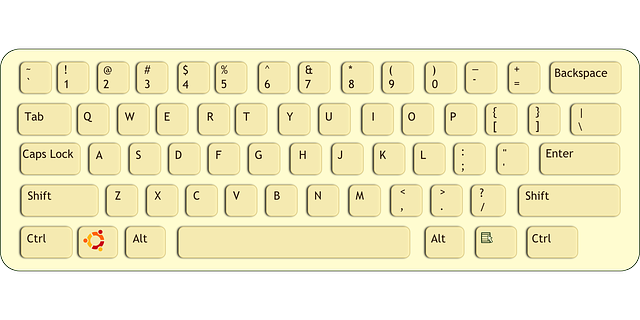
Beginning Keyboard Recognition

Overview
Lower elementary students are just learning their letters and numbers. Upper elementary students will know all their letters and numbers. Unless students have been introduced to a keyboard most likely they don’t know where the keys are located. All students need to know and remember what is on each key on the keyboard.
Students will need to be introduced first to lowercase, the space bar, enter/return. Most importantly they learn letter and number location first.
Learning Objectives
Students will:
-
be able to recognize their letters and numbers on the keyboard
-
be able to identify the enter/return key
-
be able to identify the space bar
-
be able to identify the backspace/delete key
-
understand what the backspace/delete, enter/return and space bar do
Vocabulary
- Keyboard: A keyboard is attached to your computer and has keys that operate your computer.
Pre-planning
- Print out paper keyboards for students to use to practice on. The keyboard will be different if the students are using Macs or PCs.
- Have crayons or markers to color the keys.
- Have lists of vocabulary and sight words for the students to use to practice typing.
- After students are familiar with the paper keyboard, teachers will need a computer and keyboard for each of the students.
- Use a data projector to project the keyboard for the students.
Accommodations
-
Accessibility Guide for Educators - Microsoft
-
Accessibility Guide - Apple
Use your settings on your PC or Mac to adjust the accessibility. Go to your System Preferences and choose Accessibility.
- See Accommodations Page and charts on the 21things4students.net site in the Teacher Resources.
Steps
- Students will need to be introduced to the keyboard. Project the keyboard using a data projector and point out the letters, numbers, space bar, delete/backspace, and enter/return.
- Explain to the students how they use the spacebar, delete/backspace, and enter/return.
- Explain to the students how the keyboard is divided in half and how they will use their left and right hands correctly on the keyboard. The students do not have to worry about correct placement on keys, but should know to use their left hand on the left part of the keyboard and right hand on the right part of the keyboard.
- Numbers 1, 2, 3, 4, 5 are taught with the left hand, 6, 7, 8, 9, 0 with the right hand
- Pass out one of the paper keyboard templates.
http://www.teachnet.com/graphics/powertools/neattools/keyboard.pdf
http://www.teachingideas.co.uk/word-processing/keyboard-templates -
Have the students color the keys on the left a different color than those on the right.
-
Have the students practice typing sight or vocabulary words on their paper keyboard.
-
Have the students color in several words on their keyboard. The letters in the word would be the same color. Sample words might be the, and, for, look, yellow, can.
-
When the students have a basic understanding of the paper keyboard, introduce them to computer keyboard.
-
Choose one of the keyboard games from Device and Resources on the right side of this page to learn and practice key recognition on the computer.
Activities:
Build a Keyboard -
A fun activity is to use the paper keyboards and cut out blocks of letters or use stickers. The students put them where they belong on the keyboard.
Word Processing -
Have the students open up a Word Processing Program. Give them 1-2 sentences to type. Through this activity punctuation keys are taught as part of sentence and word activities. Also the spacebar and enter/return keys should be introduced through the writing activity. (Be persistent and consistent in having students type letters with the correct hand. Tap the right or left shoulder as a cue as necessary.)
Note: You may want to introduce them to capital letters if you are doing sentence structure. Insist that hands work together to create capital letters. Try to discourage CAPS LOCK and have them use their Shift Keys.
Assessment Options
- Observations
- Check for understanding
- Students perform the games on the websites with accuracy
MITECS COMPETENCIES & ISTE STANDARDS
MITECS: Michigan adopted the "ISTE Standards for Students" called MITECS (Michigan Integrated Technology Competencies for Students) in 2018.
Empowered Learner
1d. Students understand the fundamental concepts of technology operations, demonstrate the ability to choose, use and troubleshoot current technologies and are able to transfer their knowledge to explore emerging technologies.
Device and Resources
Device: PC, Chromebook, Mac, iPad (with keyboard)
Browser: Chrome, Safari, Firefox, Edge, ALL
Websites:
http://www.teachnet.com/graphics/powertools/neattools/keyboard.pdf
http://www.teachingideas.co.uk/word-processing/keyboard-templates
CONTENT AREA RESOURCES
ELA
- Type alphabet letters for letter recognition.
Integrated Arts
Students create their own design for a keyboard.
Math
- Type numbers for number recognition.
Science
Students find animals starting with the first letter of the keys to create a homerow diagram (good for visual learners).
Credits
This task card was created by Melissa White, REMC Association of Michigan 21 Things Project Manager, January 2018. Updated January 2022.


